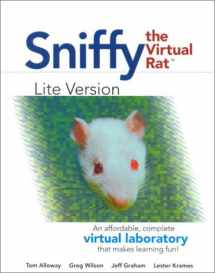
Sniffy the Virtual Rat, Lite Version
Book details
Summary
Description
The new Lite Version of the famous Sniffy software simulates the elementary phenomena of operant and classical conditioning that are discussed in courses on the Psychology of Learning and in Introductory Psychology courses. Sniffy, a realistic digital rat in an operant chamber (Skinner Box), gives students hands-on experience setting up and conducting experiments. Users begin by training Sniffy to press a bar to obtain food and progress to studying reinforcement schedules and simple classical conditioning. Sniffy Lite provides a simple user interface that enables students to program events in Sniffy's operant chamber in much the same way that research psychologists program events for real animals. So that students can visualize the results of their experiments, the program produces realistic cumulative records, suppression-ratio graphs, and other appropriate behavioral measures of Sniffy's performance. In addition, a series of "Mind Windows" shows students how Sniffy's experiences in the operant chamber produce the psychological changes that their textbooks discuss in connection with the phenomena being simulated. When students can observe how events in the operant chamber produce changes in Sniffy's psychological processes, how changes in the psychological processes cause changes in Sniffy's overt behavior, and how changes in overt behavior are reflected in the behavioral measurements that psychologists employ in their laboratories, they gain a much more thorough understanding of the learning process. Sniffy Lite is presented on a cross-platform CD-ROM the front of a Lab Manual that explains each learning phenomenon from the perspective of a "researcher" interested in producing and measuring the phenomenon. The manual also contains detailed step-by-step instructions that show both Windows and Macintosh users how to operate the program, how to set up each exercise, and how to manage computer files efficiently.


We would LOVE it if you could help us and other readers by reviewing the book
Book review



